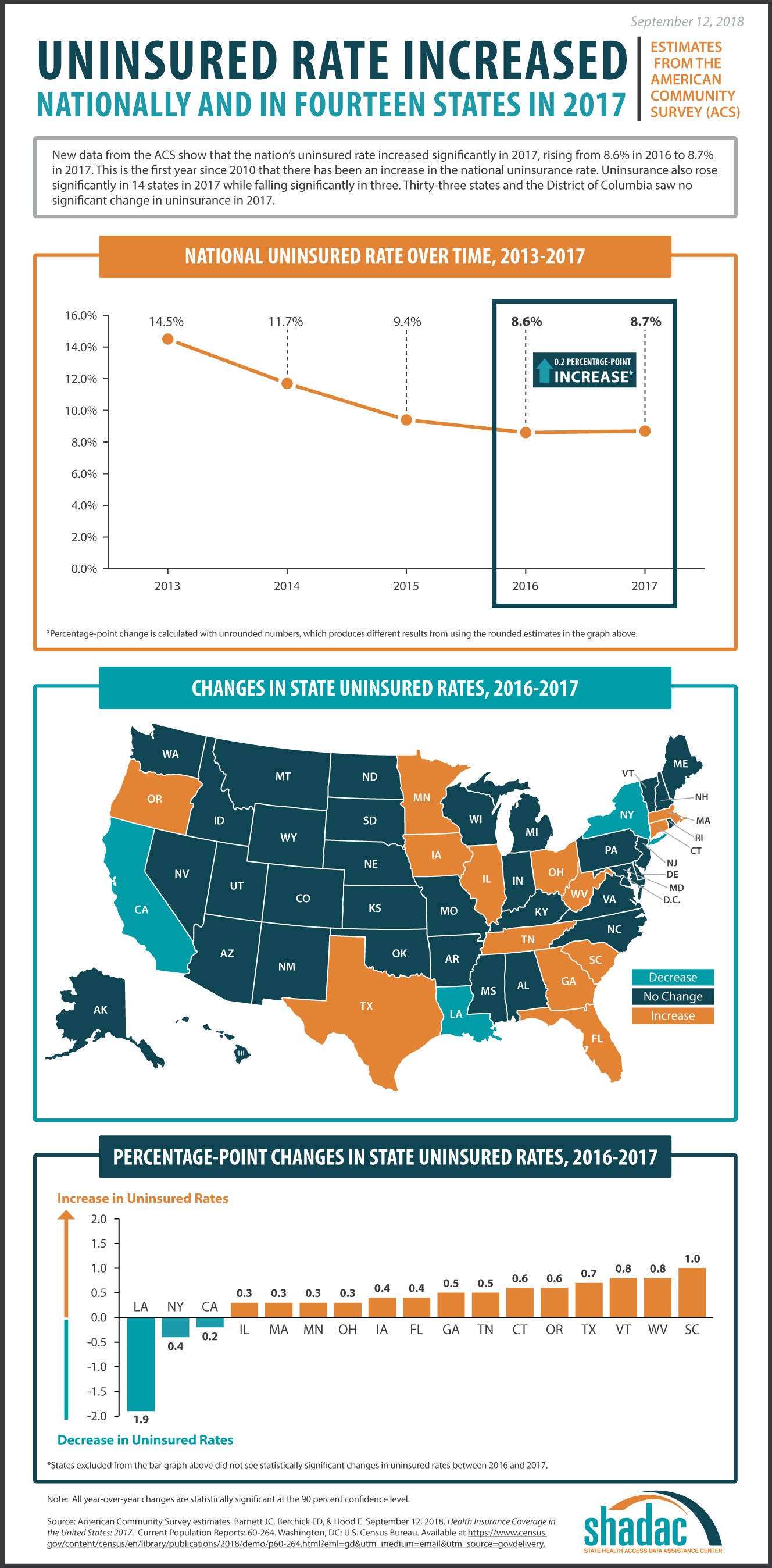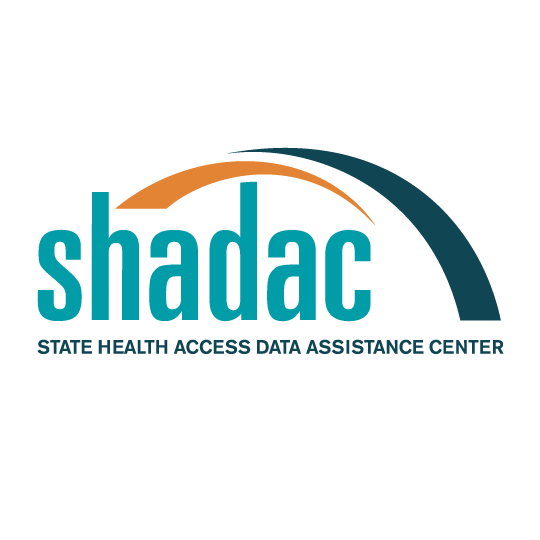Blog & News
2017 ACS: Uninsured Rate Increased Nationally and in 14 States (Infographic)
September 12, 2018:New health insurance coverage estimates from the American Community Survey (ACS) show that there was a statistically significant 0.2 percentage point increase in the national uninsured rate between 2016 and 2017. Uninsurance also increased in 14 states between 2016 and 2017, and decreased significantly in three states during the same period.
Uninsurance from 2016 to 2017
The national uninsurance rate increased from 8.6% in 2016 to 8.7% in 2017[1], with 715,000 more uninsured Americans in 2017. This is the first year since 2010 that there has been an increase in the national uninsurance rate.
Fourteen states saw significant increases in uninsurance from 2016 to 2017: Illinois, Massachusetts, Minnesota, Ohio, Florida, Iowa, Georgia, Tennessee, Oregon, Connecticut, Texas, Vermont, West Virginia, and South Carolina (Table 1). Among these states, South Carolina saw the largest percentage-point increase, at 1.0 percentage points, and Indiana, Massachusetts, Minnesota, and Ohio all experienced 0.3 percentage-point increases in uninsurance, tied for the smallest increases.

| Table 1. State Increases in Uninsurance, 2016-2017 | |||
|---|---|---|---|
| State | 2016 Percent Uninsured | 2017 Percent Uninsured | Percentage-Point Change, 2016-2017* |
| Illinois | 6.5 | 6.8 | 0.3 |
| Massachusetts | 2.5 | 2.8 | 0.3 |
| Minnesota | 4.1 | 4.4 | 0.3 |
| Ohio | 5.6 | 6.0 | 0.3 |
| Florida | 12.5 | 12.9 | 0.4 |
| Iowa | 4.3 | 4.7 | 0.4 |
| Georgia | 12.9 | 13.4 | 0.5 |
| Tennessee | 9.0 | 9.5 | 0.5 |
| Oregon | 6.2 | 6.8 | 0.6 |
| Connecticut | 4.9 | 5.5 | 0.6 |
| Texas | 16.6 | 17.3 | 0.7 |
| Vermont | 3.7 | 4.6 | 0.8 |
| West Virginia | 5.3 | 6.1 | 0.8 |
| South Carolina | 10.0 | 11.0 | 1.0 |
|
*Differences are calculated with unrounded numbers, which may produce different results from using the rounded values in the table. |
|||
Three states—California, Louisiana, and New York—experienced statistically significant decreases in uninsurance from 2016 to 2017. Of these states, Louisiana saw the largest percentage-point drop in uninsurance, from 10.3% to 8.4% (-1.9pp). New York experienced a drop in uninsurance from 6.1% in 2016 to 5.7% in 2017 (-0.4pp). California experienced a decrease in uninsurance from 7.3% in 2016 to 7.2% in 2017 (-0.2pp).
Uninsurance Levels in 2017
Texas continues to have the highest uninsurance rate in 2017 at 17.3%, an increase from 16.6% in 2016.
The lowest 2017 uninsurance rate was 2.8% in Massachusetts. This was an increase from 2016, when the state’s uninsurance rate was 2.5%.
Taken together, the uninsurance rate remained statistically unchanged in states that expanded Medicaid. The individual state uninsurance rates in these states ranged from a low of 2.8% in Massachusetts to a high of 13.7% in Alaska.
The uninsurance rate increased 0.4 percentage points overall in states that did not expand Medicaid. The individual state uninsurance rates ranged from a low of 5.4% in Wisconsin to a high of 17.3% in Texas.
Census Bureau Experts Will Share Insights during September 18th Webinar
On Tuesday, September 18th, SHADAC will host a webinar to examine the new 2017 ACS and CPS estimates, with technical insight provided by researchers from SHADAC and from the U.S. Census Bureau, which administers both surveys.
Speakers will discuss the new national and state estimates, and attendees will learn:
- When to use which estimates from which survey
- How to access the estimates via Census reports and American FactFinder
- How to access state-level estimates from the ACS using SHADAC tables
Attendees will have an opportunity to ask questions after the speaker presentations.
[1] The uninsurance estimates provided are rounded, while percentage-point changes are calculated using unrounded numbers; thus the national uninsured rate increased by 0.2 percentage points.









